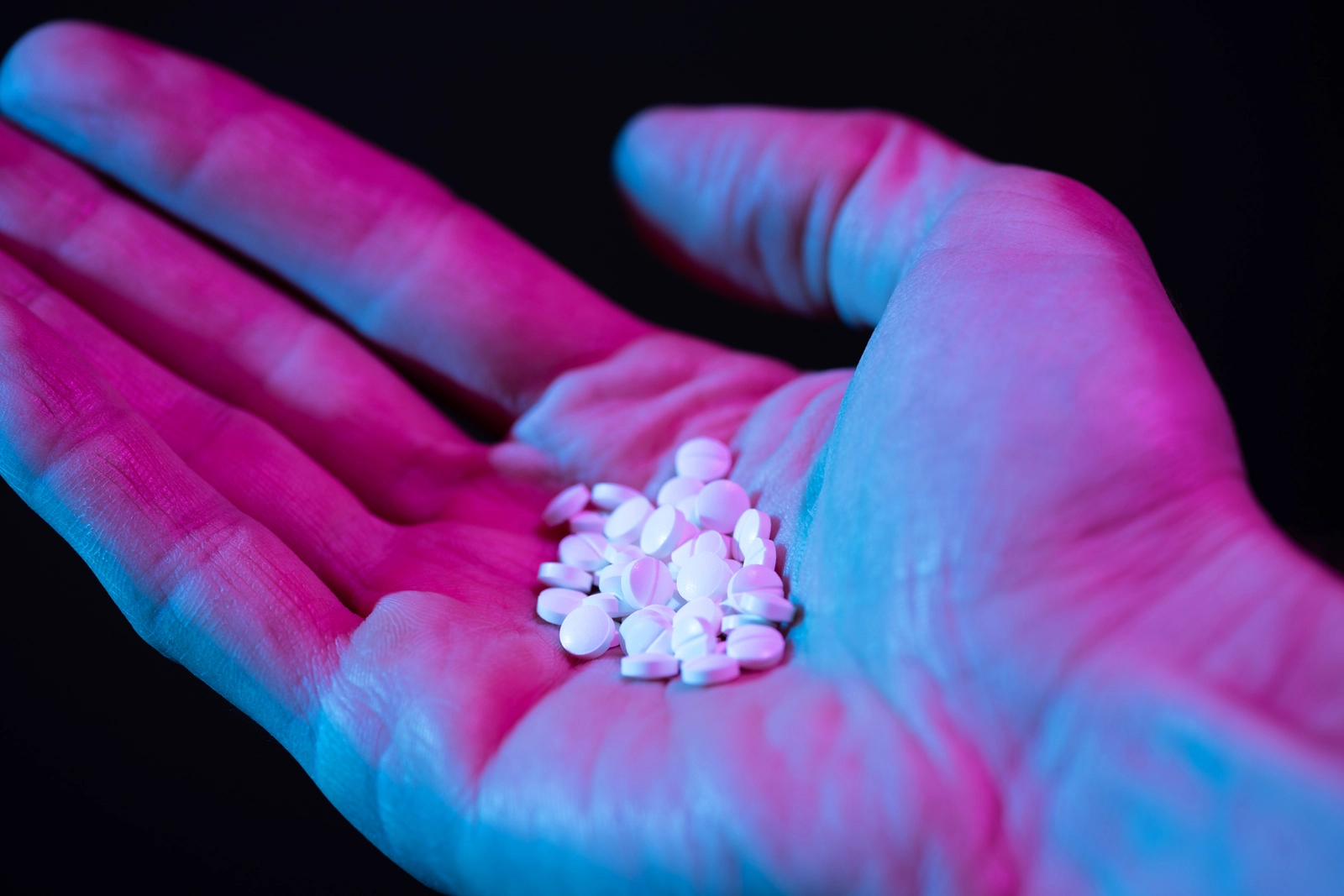How Long Does Lorazepam Stay in Your System? Half-Life and Detection Time

- Ativan (lorazepam) has a half-life of about 12 hours, with a typical range from 10 to 20 hours.
- Ativan may be detectable in urine, blood, and hair tests for days or weeks after ingestion.
- Taking Ativan at higher doses or for longer than prescribed can affect how long it lasts in the body.
- Stopping the use of Ativan suddenly can cause life-threatening withdrawal symptoms.
Ativan is the brand name for lorazepam, a benzodiazepine that’s used to treat anxiety, seizures, and sleep disturbances. It also has limited uses as an anesthetic or as a medication for withdrawal symptoms caused by alcohol or other benzodiazepines.
When Ativan is combined with other depressants or alcohol, dangerous levels of respiratory depression can occur. It’s important to understand how long lorazepam stays in your system to avoid dangerous complications.
What Is Lorazepam?
Lorazepam, or Ativan, is a benzodiazepine medication with anxiolytic, sedative, and muscle-relaxant effects. Due to its effects on gamma-aminobutyric acid (GABA), an inhibitory neurotransmitter that slows the functioning of other neurons in the brain, Ativan is prescribed to induce sleep, ease anxiety symptoms, and relax the muscles.
Benzodiazepines like Ativan were developed as an alternative to barbiturates, extremely addictive and dangerous drugs that were used for anxiety and seizure disorders. Benzodiazepines have a lower abuse potential than barbiturates, but they’re not without addiction risks of their own.
How Quickly Does Lorazepam Take Effect?
When taken orally, as many Ativan prescriptions are, the drug is absorbed slowly and has an intermediate action of onset. It takes between 15 and 30 minutes for the drug’s effects to be felt, which is different from the onset of other benzodiazepines.[1] The peak effects occur about two hours after ingestion.
Ativan is also taken as a liquid concentrate or by injection. Liquids show peak effects in two hours, while an injection of Ativan can show effects within 15 minutes and last six to eight hours.[2]
Lorazepam can have dangerous interactions with certain drugs, particularly depressants like opioids or alcohol. It’s important to know how long the drug stays in your system to avoid interactions with other drugs. Make sure you discuss any other drugs you’re taking with your doctor and find out when it’s safe to drink alcohol or take other medications after stopping Ativan use.
Lorazepam Half-Life and Elimination
The half-life of lorazepam, or the amount of time it takes to metabolize the drug to half its concentration, is about 12 hours. However, it may take between 10 and 20 hours for most people. People who use lorazepam at high doses or for long periods may have longer elimination times.
Lorazepam is metabolized in the liver and eliminated through the kidneys. Most of the drug is eliminated within a few days, but its metabolites may remain detectable for longer periods, up to a week or more.
How Long Does Lorazepam Stay in Your System?
Benzodiazepines aren’t on all drug tests. Typically, traditional drug screens, such as pre-employment screenings, may not screen for benzodiazepines. More extensive drug screenings can detect them, however.
Based on the research into lorazepam detection times, there are estimated detection windows for different drug tests:[4]
| Testing Method | Estimated Detection Window | Key Considerations |
|---|---|---|
| Urine Test | 3 to 6 Days (Up to 10 days with chronic use) | The most common screening method for benzodiazepines. |
| Blood Test | Up to 3 Days | Primarily used to assess acute impairment or toxicity levels. |
| Saliva Test (Oral Swab) | 2 to 5 Days | Easier to collect; shorter window of detection compared to urine. |
| Hair Follicle Test | Up to 90 Days | Measures historical use; standard window for most substances. |
Several factors affect how long the drug stays in the body, including:
Individual factors: Kidney function, metabolism, and general health affect how drugs are metabolized. People with health issues may eliminate drugs more slowly.
- Age: Older people have slower metabolisms and eliminate drugs slower than younger people.
- Weight: Heavier people may eliminate the drug faster than lighter people.
- Dosage and frequency: Taking the drug at higher doses or for longer periods may affect how quickly the drug is eliminated from the body.
- Polydrug use: Using lorazepam with other drugs can affect its elimination time, particularly with drugs that are metabolized by the liver, like alcohol.
- Hydration: Good hydration may cause the drug to be eliminated faster.
Can Lorazepam Have a False Positive?
Some medications can result in a false positive urine screen for lorazepam, including the antidepressant sertraline (Zoloft) and efavirenz, an antiviral drug used to treat HIV.[5] Make sure you disclose any prescription or over-the-counter medications to technicians to ensure your test is interpreted accurately.
Lorazepam Withdrawal
Lorazepam is safe when used as prescribed for short periods. Typically, this drug is prescribed for two to four weeks to avoid tolerance and dependence. While this can occur with regular use, there’s a higher risk of dependence if you take lorazepam for longer periods or at higher doses.
Never stop taking lorazepam – or any other benzodiazepine – suddenly. Once your body becomes dependent on lorazepam and needs it to function, withdrawal can occur if you stop abruptly. Benzodiazepine withdrawal can have dangerous withdrawal symptoms, including:[5]
- Headache
- Anxiety
- Tension
- Sweating
- Depression
- Insomnia
- Irritability
- Restlessness
- Confusion
- Rebound symptoms from the original condition, such as anxiety
- Dizziness
- Feeling like you’re out of your body
- Feeling intolerant of sound
- Dissatisfaction with life
- Numbness or tingling of extremities
- Nausea
- Vomiting
- Diarrhea
- Hallucinations
- Tremors
- Abdominal cramps
- Vertigo
- High body temperature
- Fast heart rate
- Seizures
Because benzo withdrawal can be dangerous, doctors often recommend a taper schedule to wean you off of the drug and reduce the severity of withdrawal symptoms.
Lorazepam Abuse and Addiction
Lorazepam is a Schedule IV drug that has a lower potential for misuse or dependence than some drugs, but it can still be habit-forming. With long-term use, you can build a tolerance and develop dependence, leading to withdrawal symptoms if you stop taking it.
If you need help stopping lorazepam use, it’s important to talk to your doctor about a taper schedule. If you abuse or have become addicted to lorazepam, a full addiction treatment program may be necessary to help you manage the symptoms of withdrawal and address the underlying causes of addiction.
The first step in addiction treatment is often medical detox. This provides a medically supervised setting to ensure you’re stopping lorazepam usage slowly, as well as to monitor your health and prevent potentially dangerous complications.
Once detox is complete, an addiction rehab program may be necessary. This may take place in an inpatient or outpatient setting but often includes individual therapy, group therapy, behavioral therapy, and other modalities to address the psychological and social aspects of addiction.
Get Help for Lorazepam Abuse or Addiction
Lorazepam is an intermediate-acting benzodiazepine, but it can be detectable for days or weeks in the body. It’s important never to stop taking lorazepam suddenly, as potentially dangerous withdrawal symptoms can occur. If you or a loved one is struggling with lorazepam abuse or addiction, seek help with a formal addiction treatment program.
Frequently Asked Questions About Lorazepam Half-Life and Detection Windows


